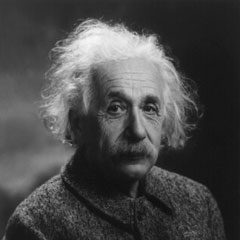Albert Einstein said “If I had one hour to save the world, I would spend the first 55 minutes defining the problem.” Who can argue with Einstein? I complete agree with him. You need a very clear picture of your current reality (your problem) to focus on your desired destination (the solution).
I heard a story that illustrates how important it is to understand your problem before you attempt to solve it:
Motorola had been reducing the size of their cell phones for years. Some of the first cell phones were the size of backpacks, and now you can easily carry one in the palm of your hand. Along the way, some of Motorola’s customers requested bigger buttons. This is a tough request when the goal is to make everything smaller.
Motorola did some research and learned this particular request was coming from a specific market: fire fighters, rescue workers, construction workers, miners and the like. In most cases, this niche market needed to use cell phones in low-visibility conditions while wearing gloves.
Ultimately, the solution was to provide a phone that operated via a user squeezing his or her hand. The firefighters did not know this was possible, neither did Motorola until they received this request. The firefights thought they needed bigger buttons. But, once Motorola understood what these customers were trying to accomplish—using a cell phone in low visibility with gloves on—they found an ingenious solution.
There is a big difference between what you think you need and what you are trying to accomplish. Therefore, like Einstein, you need to spend time planning out your desired destination before determining what you need to get there.
In the next Communicate to Win post, I will help you dissect your current reality and your desired destination. Soon, you’ll be able to see how to use my problem solving tips not only for business problems, but for the everyday decisions you need to make.
